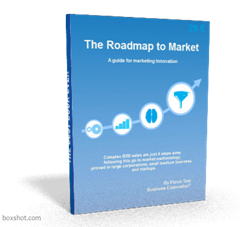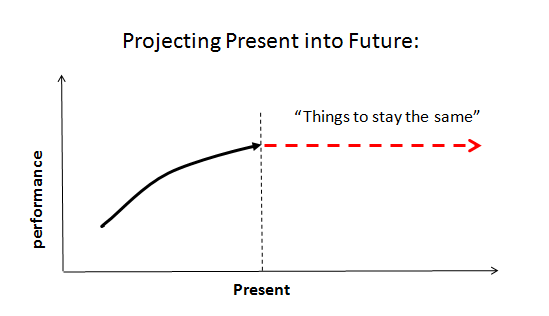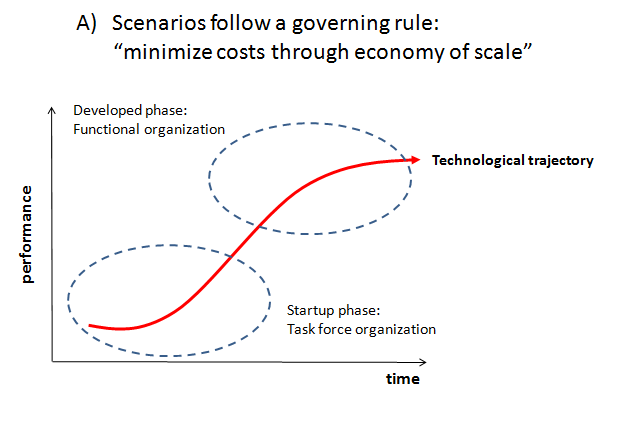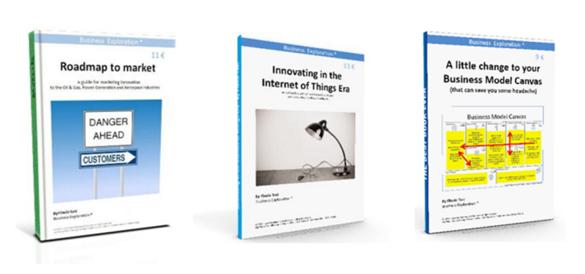

|
On which Spool are you winding up your Future? |
|
On which Spool are you winding up your Future? |
|
Using evolutionary models for Scenarios planning can help to take decisions based on limited information when building new business, launching new products, opening new markets... Dear Fellow Innovator,To build our future, we need to learn how to woven the thread of our decisions around the right spool. The spool represents the model we want to use to give a shape to our future scenarios. If we have a model to which we can attach our information, data and assumptions, our scenarios have more chances to be consistent and plausible. The way we choose a model for our scenarios is linked with the basic assumptions we make. We can easily list 4 basic assumptions and their models: The 4 basic assumptions in scenarios planning:1 )"Things will stay the same": This is the assumption we make whenever we "project the Present into the Future" We see our scenario as a "steady state" development model, where everything is fixed and decisions are set.
We look at the future almost as if we are the only thing on heart. 2) "Things will behave the same" This is the assumption we make whenever we "project the Past into the Future" We see our scenario as an "Operations" development model, where, moving forward, we replicate the same decisions.
We look at the future almost as if we can avoid to care about others, and set the operating rules of the game. 3) "A governing rule exists" This is the assumption we make whenever we "adapt an evolutionary model" We see our scenario as an "Organization's" development model, where, moving forward, we use codified decisions. In business this can be seen in two key evolutionary models developed by: · Prof. Christensen, of Harvard University · and the Russian innovator Altshuler: 3A) The first explained how organizations' functioning mode changes along their development: The incipient organization needs that every function is integrated, in order to manage the complexity and uncertainty of initial business models. Here, everybody wears more hats and the goal is to "make it work". As long as the organization progresses, functioning rules are set, activities are specialized and coordination rules put in place. The organization's architecture allows to externalize the activites to third parties, because all functioning is clear and replicable.
3B) The second explained that problems find new solutions that are technologically more intangible: The evolutionary scenario moves from solutions based on mechanics, to solutions based on chemistry, then electro-magnetism, and so on, exploiting fields of forces that make the solution always less expensive, and less physical.
In these two evolutionary models we look at the future as we should care only about ourself: our organization and its (technological) tools. 4) "Similar systems behave the same" This is the assumption we make whenever we "try to adapt external models". i.e. models not belonging to the context. We build scenarios based on the evolutionary models that explain us other systems. This is the case e.g. when we try to model competitive scenarios using the strategies proved in Nature as capable to grant better chances of survival: · Dinosaurs: the biggest win · Dolphin: making an evolutionary U-turn: ( returning to be a fish ) · Swallows: changing territory to survive climate · Zebras: sheltering into the crowd of the herd · Humans: adapting to change... As strange as it may seems, think to plausible business scenarios as survival strategies, can help switch from a single player point of view to a multi-players game. Here we start to look at our future as a product of our interaction with others: as being part of a larger system.
I went through these 4 basic assumption because the final goal of any scenarios building is to force us to change our underlaying assumptions, that too often we take for granted. Knowing we are playing with the scenario's assumptions, make it easier also to inject discontinuities into the exercise: facts that are not in line with the evolutionary pathway we are exploring. Challenging our assumptions and injecting discontinuities, allows us to: · prove our actual business model resilience to abrupt changes · check sustainability of the possible development pathway · investigate systemic risks of the environment to whom we belong It's an exercise that make us: · understand what is possible · see how we relate with competition and environment · tear apart unnecessary anchors of our thinking · enforce creativity Being Creative it's for sure the most funny part.
If you want a deeper dive on Scenarios Planning I found interesting this:
To read more about marketing innovation Cordialmente, Copyright © 2016 Business Exploration ®, All rights reserved. If you liked this post, get more of the kind. The best way to reward this post is with your "like" |
|
Little nightly thoughts by Business Exploration® |
|
Puzzled by your Marketing Plan? |

|
Get our free booklet: Roadmap to Market
And discover our methodology
Satisfied or Reimbursed |
|
Our Newsletter reaches 2200 professionals in 47 nations, with the ambition to offer alternative points of view and a relax break to our readers. |







